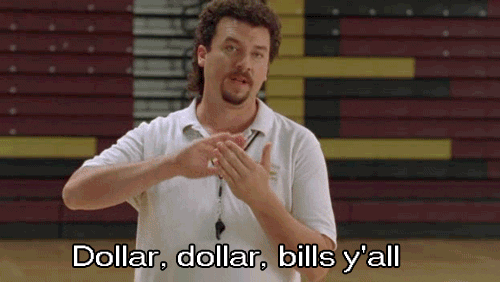You’ve probably heard that you should consider pitching a retainer agreement to your clients.
But how do retainers work? Are they actually a good fit for your business? And if so, how do you sell them to clients?
What’s a Retainer Agreement?
If you’re like most freelancers, you’ve spent countless hours building your sales pipeline, pitching clients, and working on projects. So you’ve probably noticed that most freelance work is transactional.

After you land a client, complete a project, and cash your check, there’s no guarantee of future work. Some clients return with future projects, but many more don’t. This means you constantly have to work to fill your sales pipeline.
Retainers solve this problem by creating an ongoing relationship between a freelancer and their client.
With a retainer agreement, your client retains the right to use you, the freelancer, for work on an ongoing basis.
The most common type of retainer setup involves a freelancer selling a block of their time each month for a discounted monthly fee. But some retainers are for more profitable than others.
Let’s take a look at why.
Retainer Profitability 101
At a fundamental level, most freelancers sell clients their time.
Even when you charge a fixed fee for a given project, you likely calculate that fee based on the number of hours you think the project will take to complete multiplied by an hourly rate.
Say you charge $100 an hour; for a 10-hour project, you’d charge $1000.
When you first start out, this approach works totally fine. When you don’t have clients, you’ve got nothing but time. But charging for your time gets complicated fast.
There are 3 issues with this business model:
1. Your Time Doesn’t Scale
The first problem, is that your time doesn’t scale. Everybody has a maximum amount of work they can handle. After 40 or 50 hours per week, the quality of your work starts to degrade.

Your mileage may vary, but everybody has a limit. Eventually, you run out of time—your inventory—and you can’t make more money.
2. Freelancing Isn’t Predictable
The next problem is that, as discussed earlier, the transactional nature of freelance work means that it’s not always steady. Some months you have more work than you can handle, and other months your schedule is far more open than you’re comfortable with.
This means you need to watch your savings like a hawk, constantly work to fill your sales pipeline, write proposals, and sell to prospects.
You can’t charge for any of this work, and it takes time away from the activities that actually are billable.
3. Most Freelancers Lose Money on Retainers
While a typical retainer agreement—where you sell a block of your time for a discounted fee each month—does solve the problem of getting work regularly, it also causes a big problem.
Most retainers decrease profitability.
In exchange for signing a retainer agreement and promising to write you a check each month, clients typically expect to receive a discount.

Remember that $100 per hour rate? Before you made $1000 for 10 hours of work. If you’re forced to discount your rate to $75, you’ve suddenly lost 25% of your revenue!
Luckily, there’s a solution.
4 Creative Retainers
So how do we fix these problems?
Rather than using retainers to sell chunks of your future time, sell your client a monthly product instead!
Here are 4 creative retainer structures that actually increase your profitability:
1. Insurance
The projects you create for your clients are extremely valuable. If something suddenly stops working, it will cost your client time and money, and they may not be capable of fixing it themselves.
If their website crashes, they’ll lose customers.
Instead of selling chunks of your time, consider selling an “insurance policy” instead. If you’re a web developer, for example, offering monthly website backups and security testing can deliver clients peace of mind.
2. Optimization
Just because the project has finished doesn’t mean there isn’t room for improvement. If the goal of your project was to increase sales, you can continue to drive those conversion rates up.
Paid marketing and sales funnels need constant monitoring and improvement.
Marketers and web designers can often sell clients on ongoing optimization packages; while these projects do take some time, you can frequently charge more for them than you would with an hourly retainer. After all, increasing your client’s sales is more valuable than agreeing to work for a fixed amount of time.
3. Analytics
Clients often find actionable insights just as valuable, if not more valuable, than the work itself. After all, nearly anybody can create a webpage or design and advertisement.
It’s much more challenging to uncover what’s working and what’s not, and figure out a plan for improvement.
Consider including an executive report in your retainer with actionable insights. This type of offering is incredibly valuable and doesn’t typically take up too much time.
4. Coaching
Clients typically view freelancers as more than just hourly workers. They’re comfortable paying a premium for your work because you’re an expert at what you do.
Frequently, agreeing to coach a client’s team is a better option for both parties. Your client doesn’t have to pay for as much of your time, and you can charge a premium for a smaller number of hours.
The best retainer agreements bundle two are more of these options into a single, compelling offering.
For example, as a WordPress developer, you could bundle the following:
- Daily Backups
- Updates of the WordPress core and any Plugins
- Up to 5 Hours of Support & Troubleshooting
- Monthly Analytics Summary
I’ve seen freelancers charge thousands of dollars for this type of retainer agreement, and clients are often ecstatic because they don’t have to worry about a critical part of their business infrastructure failing. It’s a win-win!
How to Sell Retainers
If what I’ve outlined above sounds good, but you’re daunted by the idea of actually selling a retainer agreement to your clients, don’t worry. It doesn’t have to be complicated.
I rarely recommend trying to sell a retainer before completing a project first. Clients need to trust you before they’ll agree to an ongoing relationship, and that takes time.
I’ll often sell a client several projects before proposing a retainer agreement. As a designer and web developer, my path to retainers often looks something like this:
- Small Project – Design and build a single landing page on Shopify
- Larger Project – Design and build a full new Shopify theme
- Retainer – Provide ongoing services for Shopify
In general, your goal with the approach is to work diligently to build the relationship and increase the level of trust and respect your client has for you. Once you’ve done that, selling a retainer becomes much easier.

Leave a Reply